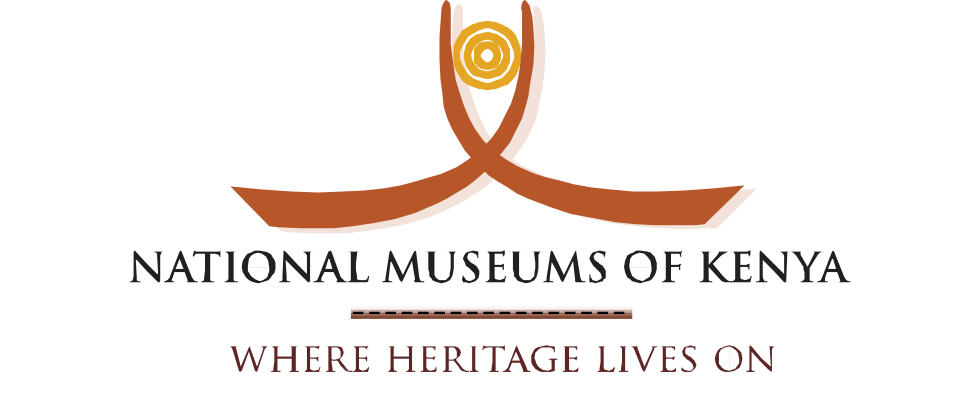Background and Objectives
The department of earth sciences is one the core research department of the National Museums of Kenya. It comprises of four sections namely Paleontology, Archaeology, Palynology/Paleobotany and Geology.
Our research is wide-ranging and cross-disciplinary in its themes, that ensure the adequate distribution of our support and resources. Through our responsive research activities, we work towards the long term convergence of related research programmes.
Objectives of Earth Sciences Department
- Carrying out Paleontological, Archaeological, Palynological/Palaeobotanical and Geological research both in field and laboratory based.
- Documentation, Management and conservation of Paleontological, Archaeological, Palynological/Palaeo-botanical and Geological collections for future reference and comparative studies.
- Dissemination of scientific information to the scientific community and public in general
- Training both local and international students specializing in Palaeontology, Paleoanthropology, Archaeology, Geology, Palynology/Paleobotany and other related fields.
The department is internationally recognised for its contribution in the prehistoric studies and has one of the largest and some of the best collections found in the world.
Palynology/Palaeobotany is a section with interdisciplinary science and is under the department of Earth Science. The main activities includes field work, data collection, sampling, documentation of Palynological/Palaeobotanical materials, training and dissemination/publication;
The section studies fossil palynomorphs from the Precambrian to the Holocene, through a diverse range of applications, related to many scientific disciplines: These includes, Palaeoecology and climate change, we use Palynology to reconstruct past vegetation (land plants), marine and freshwater phytoplankton communities, and so infer past environmental (palaeoenvironmental) and palaeoclimatic conditions. Limnology i.e. Freshwater palynomorphs, animal and plant fragments, including the diatoms and sponge spicules is used to study past lake levels and long term climate change.
Other studies i.e. Biostratigraphy and geochronology, is used by geologists through palynological studies to correlate strata and determine the relative age of a given bed, horizon, formation or stratigraphical sequence. Archaeological palynology examines human uses of plants in the past (Use of Phytoliths). This help to determine seasonality of site occupation, presence or absence of agricultural practices or products, and ‘plant-related activity areas’ within an archaeological context.
Bonfire Shelter is one such example of this application. Forensic palynology is also applicable in the section where the study of pollen and other palynomorphs can be used for evidence at a crime scene, not overlooking Melissopalynology which is the study of pollen and spores found in honey and is highly valued by the bee farmers. After all these data collection and sampling is done from the field through coring, geological trenching, peat digging or deep drilling, its then processed, some material archived and the rest analyzed to be used for publication/dissemination, training, workshop and conferences where necessary.
Paleontology is the study of past life (biodiversity) preserved in the form of fossils of both animals and plants. The section houses one of the largest vertebrate fossil collection south of the Sahara, totaling to close to 350,000 specimens including about 1000 elements of early human remains. Some of the oldest fossils include the Dinosaurs from sites in northern part of the country dated to close to 100 million years. The section coordinates and facilitates local and international research teams to all fossil sites within Kenya, curates or documents and preserves the fossil heritage discovered by various research teams for future research and posterity.
The section disseminates research findings from both local and international scientists through publications, conferences, workshops and exhibitions, as well as guided visits to the section to view original fossils on request. Fossils recovered while embedded on matrix are cleaned and reconstructed in preparation for research and casting. Identical duplicates (casts) of the original fossils from the section are used for education, research and exhibitions.
The Archaeology Section is one of the oldest the Department and also one of the largest and most vibrant in supporting prehistoric research in Kenya. It brings together an extraordinary community of scientists committed to advancing and transforming our understanding of the past through innovative research, collection management.
We aim to convey that knowledge to society today, in ways that will change ideas, contribute to vital wider conversations and help to navigate a wiser, more sustainable future. Research finding from our section has had immense influence on field archaeology nationally and internationally. Stimulating collaborations, exciting conversations, cutting-edge debate and a friendly, informal atmosphere for research and dissemination enriched in our mission and vision of the National Museums of Kenya.
Our Mission
We strive to unearth human ancestry in the context of geological and environmental history
Our Vision
To be a Centre of excellence in earth sciences research for development.
The Geology section at the Museum is housed within the Earth Sciences Department. The main activities include geological field work, data collection, sampling, documentation of geological materials; examining the composition of samples and specimens; studying sites for developments, formations and composition; gathering and analyzing geological data; measuring and testing fossils, rocks, soil, ores and other material with the proper instruments.
Further activities include planning geological projects and field sampling events; disseminating research findings through organizing conferences, workshops, seminars and education lectures; sourcing for funding; coordinating research programs; writing reports on findings; Investigating and evaluating geological materials from the public; consulting on various geology related issues like latest mapping techniques; facilitating field geological exploration licenses,; holding meetings and supervising staff under the section.
